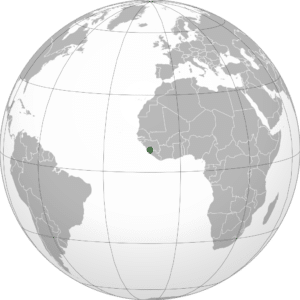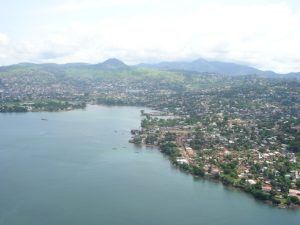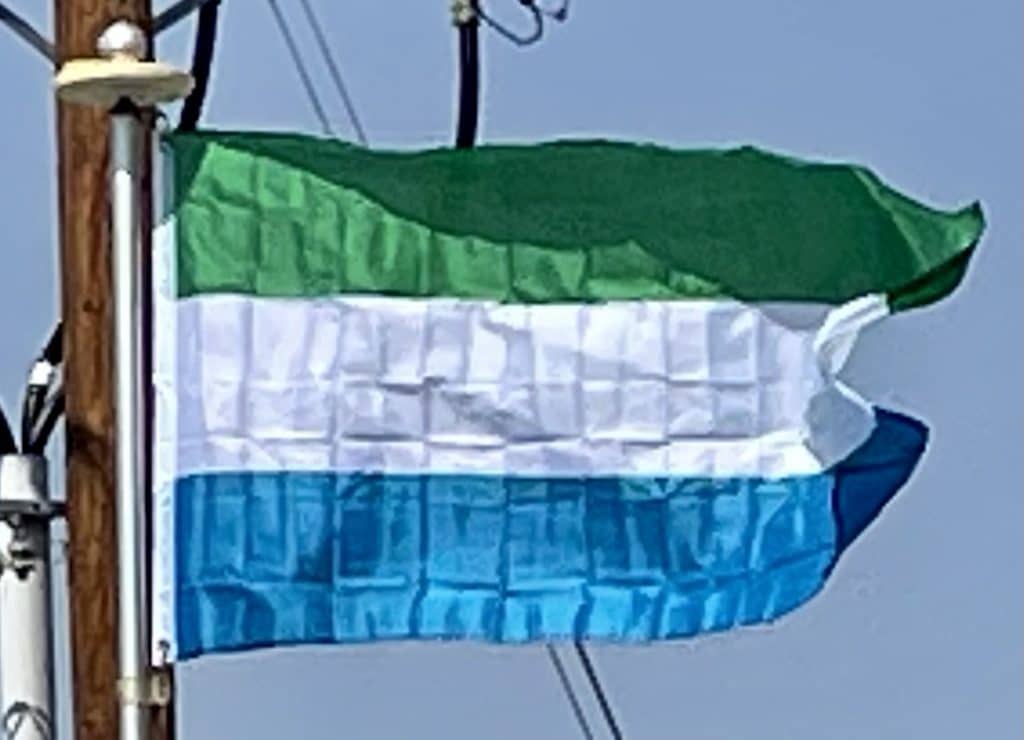Introduction:
Sierra Leone, officially the Republic of Sierra Leone, informally Salone, is a country on the southwest coast of West Africa. It is bordered by Liberia to the southeast and Guinea to the northeast. Sierra Leone has a tropical climate with a diverse environment ranging from savanna to rainforests, a total area of 71,740 km2 (27,699 sq mi) and a population of 7,092,113 as of the 2015 census. The capital and largest city is Freetown. The country is divided into five administrative regions which are subdivided into sixteen districts. Sierra Leone is a constitutional republic with a unicameral parliament and a directly elected president. Sierra Leone is a Muslim-majority country at approximately 78%, though with an influential Christian minority at about 21%. Muslims and Christians in Sierra Leone are extremely tolerant of each other, and all the major Muslim and Christian holidays are officially national holidays in the country.

Sierra Leone achieved independence from the United Kingdom on 27 April 1961, and Milton Margai became the country’s first Prime Minister. Sierra Leone held its first general election as an independent nation on May 27, 1962. From 1968 to 1985 Sierra Leone was governed by strongman president Siaka Stevens. From 1978 to 1985 Sierra Leone was officially a one-party state, as President Stevens’ political party, the All People’s Congress, was the only legal political party in the country.
The multiparty democratic constitution of Sierra Leone was again adopted in 1991 by President Joseph Saidu Momoh, Stevens’ hand-picked choice. From March 23, 1991 to 2002, a group of former Sierra Leone soldiers launched a brutal civil war in a failed attempt to overthrow the Sierra Leone government. The APC’s 24-year rule of Sierra Leone ended on April 29, 1992 in a military coup and a 25-year-old Captain Valentine Strasser ruled the country from 1992 to 1996 in a junta government.
Sierra Leone returned to a democratically elected government in 1996 when Ahmad Tejan Kabbah of the Sierra Leone People’s Party was sworn in as president after his victory in that year’s election. However, the Sierra Leone military overthrew President Kabbah in a coup on May 25, 1997. A coalition of West African ECOWAS armed forces led by Nigeria reinstated President Kabbah in February 1998. In January 2002, President Kabbah officially announced the end of the civil war. Sierra Leone has had uninterrupted democratic government from 1998 to the present day.

Sixteen ethnic groups inhabit Sierra Leone, the two largest and most influential being the Temne and Mende peoples. About 2% of the country’s population are Krio, descendants of freed African American and West Indian slaves. English is the official language used in schools and government administration; however, Krio is the most widely spoken language across Sierra Leone, spoken by 97% of the country’s population. Sierra Leone is rich in natural resources, especially diamond, gold, bauxite and aluminum. The country is a member of the United Nations, African Union, Economic Community of West African States (ECOWAS), Mano River Union, Commonwealth of Nations, African Development Bank, and Organisation of Islamic Cooperation.
History:
Archaeological finds show that Sierra Leone has been inhabited continuously for at least 2,500 years, populated successively by societies who migrated from other parts of Africa.
